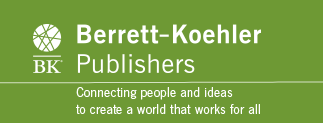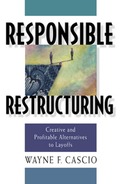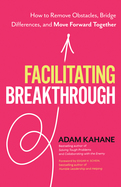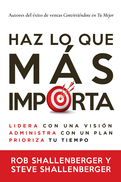Wayne Cascio explodes thirteen common myths about downsizing, detailing its negative impact on profitability, productivity, quality, and on the morale, commitment, and even health of survivors. He uses real-life examples to illustrate successful approaches to responsible restructuring used by companies such as Charles Schwab, Compaq, Cisco, Motorola, Reflexite, and Southwest Airlines. And he offers specific, step-by-step advice on what to do-and what not to do-when developing and implementing a restructuring strategy that, unlike layoffs, leaves the organization stronger and better able to face the challenges ahead.
- Explodes thirteen myths about the supposed benefits of downsizing
- Details the specific strategies companies such as Charles Schwab, Compaq, Cisco, Motorola, Reflexite, and others used to restructure responsibly
- Includes practical checklists of dos and don'ts for responsible restructuring
- Social media star: In November 2013, Seth's blog post entitled "Marriage Isn't for You" garnered more than 30 million hits and resulted in interviews onGood Morning America, Fox News, and media coverage around the world.
- Heartfelt and moving: Smith writes candidly, and at times with disarming humor, about his struggles with addiction and depression, his suicide attempt, and the happiness he discovered by focusing on others.
In Your Life Isn't for You, Seth Adam Smith expands on the philosophy outlined in his popular blog post "Marriage Isn't for You," which received over 30 million hits and has been translated into twenty languages (and counting). In this inspiring, funny, and moving book-a welcome antidote to the modern obsession with self-Seth shows how his philosophy of living for others can enrich every aspect of your life, just as it has his.
Seth writes not as an expert but as a flawed human being sharing what he's learned-and learned the hard way. He reveals how, years before his marriage, his self-obsession led to a downward spiral of addiction and depression, culminating in a suicide attempt at the age of twenty.
It was the love and support Seth experienced in the aftermath, which he so poignantly depicts here, that opened his eyes to the dead end (literally) of selfishness. With a mix of humor, candor, and compassion, he reflects on the experiences in his life-his difficult missionary stint in Russia, his time as a youth leader in the Arizona desert, his marriage, even a children's story his father read to him-that led to his conviction that the only way you can find your life is to give it away to others.

Many organizations that place emphasis on teamwork tend to value people who promote themselves and think on their feet. Meanwhile, quiet types like programmers and other techies, who sit alone and become absorbed in their work, are often overlooked or misunderstood. But introverts can be highly effective influencers when they forego an extrovert’s in-your-face techniques and use their natural strengths to make a difference.
In this video workshop based on her book Quiet Influence: The Introvert's Guide to Making a Difference (Berrett-Koehler), Jennifer Kahnweiler identifies specific workplace challenges for introverts—including "people exhaustion"—and helps you investigate strengths and weaknesses in the context of a real-life work scenario. The bulk of this video shows how introverts can succeed at work by cultivating six key strengths:
- Taking Quiet Time to unleash creativity and sustain energy
- Preparation to prove the value of your proposal and involve others
- Engaged Listening to gain increased understanding of situations
- Focused Conversations to solve problems and work through conflict
- Writing to advocate a position, and motivate others
- Thoughtful Use of Social Media to grow relationships and move people to action
Several exercises will help you connect with these concepts. Introversion didn’t derail Tim Cook or Warren Buffett. It doesn’t have to impede your livelihood, either. This video was produced in partnership with Berrett-Koehler Publishers.
Jennifer B. Kahnweiler, Ph.D., is a global speaker, bestselling author and thought leader who helps introverts lead with quiet confidence. Her bestselling books, The Introverted Leader, Quiet Influence, and The Genius of Opposites, have been translated into 14 languages.
Jennifer has worked with hundreds of organizations including GE, Hewlett-Packard, NASA, Boeing and the CDC She is a Certified Speaking Professional (CSP), granted to only 8% of the National Speaker’s Association and she invites you to visit her website at jenniferkahnweiler.com/.
Like adults, students of all ages struggle with how to manage their time. Encountering the necessity of time management for the first time, high schoolers juggle classes, extracurricular activities (all but mandatory for college admissions), jobs, internships, family responsibilities, and more. College brings even more freedom and less structure, making time management even more critical.
Brian Tracy's Eat That Frog! has helped millions around the world get more done in less time. Now this life-changing global bestseller has been adapted to the specific needs of students. Tracy offers readers tips, tools, and techniques for structuring time, setting goals, staying on task (even when you're not interested), dealing with stress, and developing the skills to achieve far more than you ever thought possible. This is the book that parents and teachers have long been wishing Tracy would write.
It is becoming less straightforward for people to move forward together. They face increasing complexity and decreasing control. They need to work with more people from across more divides. In such situations, the most common ways of advancing—some people telling others what to do, or everyone just doing what they think they need to—aren't adequate.
One better way is through facilitating. But the most common approaches to facilitating—bossy vertical directing from above or collegial horizontal accompanying from alongside—aren't adequate. They often leave the participants frustrated and yearning for breakthrough.
This book describes a new approach: transformative facilitation. It doesn't choose either the bossy vertical or the collegial horizontal approach: it cycles back and forth between them. Rather than forcing or cajoling, the facilitator removes the obstacles that stand in the way of people contributing and connecting equitably. It enables people to bring their whole selves to the process.
This book is for anyone who helps people work together to transform their situation, be it a professional facilitator, manager, consultant, coach, chairperson, organizer, mediator, stakeholder, or friend. It offers a broad and bold vision of the contribution that facilitation can make to helping people collaborate to make progress.
In researching more than 1,260 managers and executives from more than 108 different organizations, Steve and Rob Shallenberger discovered that 68 percent of them feel like their number one challenge is time management, yet 80 percent don't have a clear process for how to prioritize their time.
Drawing on their forty years of leadership research, this book offers three powerful habits that the top 10 percent of leaders use to Do What Matters Most. These three high performance habits are developing a written personal vision, identifying and setting Roles and Goals, and consistently doing Pre-week Planning. And Steve and Rob make an audacious promise: these three habits can increase anyone's productivity by at least 30 to 50 percent. For organizations, this means higher profits, happier employees, and increased innovation. For individuals, it means you'll find hours in your week that you didn't know were there--imagine what you could do!
You will learn how acquiring this skillset turned an "average" employee into her company's top producer, enabled a senior vice president to reignite his team and achieve record results, transformed a stressed-out manager's work and home life, helped a CEO who felt like he'd lost his edge regain his fire and passion, and much more. By implementing these simple and easy-to-understand habits, supported by tools like the Personal Productivity Assessment, you will learn how to lead a life by design, not by default. You'll feel the power that comes with a sense of control, direction, and purpose.
En nuestra investigación de más 1260 gerentes, descubrimos que más del 68% sentían que su mayor desafío es cómo priorizar su tiempo, pero el 80% de los mismos carecían de un proceso para organizarlo y centrarse en lo que más importa. Este libro trata sobre los tres hábitos de alto rendimiento que te empoderarán para tomar el control de tu horario, priorizar el tiempo y aumentar la productividad entre un 30 y 50%. Esto se traduce en un mejor liderazgo, un aumento de las ventas, una mayor productividad, más beneficios y una cultura mejorada. A nivel personal, implica un mejor equilibrio vital, mejoras en la salud, menos estrés, mejores relaciones, más dinero y un enfoque preciso en tus prioridades.
























